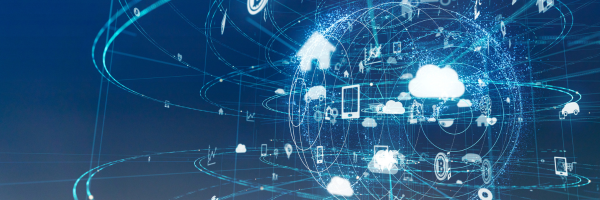By Chief Automation Officer, George K. Mehok
May 17th, 2023
In this month’s issue of Automation Review, we will explore Data Visualization integration and the importance of analytics when designing a hyper-automation infrastructure and how converting disparate data sets into actionable information sources can enable businesses to maximize the ROI of their technology investment.
There are six key infrastructure components necessary to achieve transformative results and create a data-driven, intelligent workflow:
1) Process Discovery Tools
2) Event-Driven Integration Platform
3) Robotic process automation (RPA)
4) AI / Machine Learning
5) Data Visualization
6) Operational Monitoring and Alerting
What is Hyper-automation?
Hyper-automation is a business-driven, disciplined approach that organizations use to rapidly identify, vet, and automate as many business and IT processes as possible. Hyper-automation involves the orchestrated use of multiple technologies, tools, or platforms[1].
Hyper-automation is the intersection of business process automation, service-oriented infrastructure, and artificial intelligence. The outcome can be transformational, resulting in efficiencies that drive bottom-line financial success and customer satisfaction that exceeds legacy customer service metrics. Top-line revenue grows as the company’s resources are redeployed to internal innovation energy amplified as a catalyst to new products, services, and in some cases, entire new market segments.
While over 60% of companies use some form of business process automation and 24% have begun implementing low code process automation tools, companies must build a technology architecture incorporating access to the next generation of Artificial Intelligence capabilities.
[1] https://www.gartner.com/en/information-technology/glossary/hyperautomation
What is Data Visualization2?
Data visualization is the practice of translating information into a visual context, such as a map or graph, to make data easier for the human brain to understand and pull insights from. The main goal of data visualization is to make it easier to identify patterns, trends and outliers in large data sets. The term is often used interchangeably with others, including information graphics, information visualization and statistical graphics.
Data visualization provides a quick and effective way to communicate information universally using visual information. The practice can also help businesses identify which factors affect customer behavior; pinpoint areas that need improvement or attention; make data more memorable for stakeholders; understand when and where to place specific products; and predict sales volumes.
Other benefits of data visualization include the following:
· The ability to absorb information quickly, improve insights and make faster decisions.
· An increased understanding of the next steps that must be taken to improve the organization.
· An improved ability to maintain the audience’s interest with information they can understand.
· An easy distribution of information that increases the opportunity to share insights with everyone involved.
· Eliminate the need for data scientists since data is more accessible and understandable.
· An increased ability to act on findings quickly and, therefore, achieve success with greater speed and fewer mistakes.
Data Visualization for Robotics
The potential of future advancements in robotic process automation (RPA) is immense and ever-growing; however, to realize the full benefit, it is imperative that structured and unstructured datasets must be accessible for both human and robotic consumption.
Software robots consume data more efficiently than humans by synthesizing these datasets using machine learning algorithms and language models that can translate and glean insights, patterns, and anomalies in ways far superior to the human brain. Therefore, a hyper-automation infrastructure must integrate data visualization tools that transfer these machine-generated insights into a format consumable by the human operational and line of business leaders.
Data Visualization for Process Engineers
The flow of input and output data into RPA workflows provides process engineers with the insights necessary to monitor the daily processing of the workflows. Also, it allows the contextualization of complex data streams as engineers design new automations.
For example, when invoice data is combined with call center customer complaint reporting followed by joining customer lifetime value information from the CRM system, process engineers can use custom data visualizations to create heat maps or time series charts by product, customer demographic and/or geography. Finally, combining this customer transaction data with the current RPA transaction records can provide engineers with the information necessary to identify new automation opportunities or create an input data stream to trigger pre-defined decisioning for the RPA workflow to execute.
By leveraging these visualization techniques, process engineers are better positioned to design data-driven workflows elevating traditional task-oriented RPA processing to the next level – hyper-automation.
Automation Review – Hyper-Automation Series:
Part 1: Process Discovery Tools and Event-Driven Integration Platforms
Part 2: Artificial Intelligence/Machine Learning
To learn more and explore how your business can be transformed by leveraging hyper-automation:




